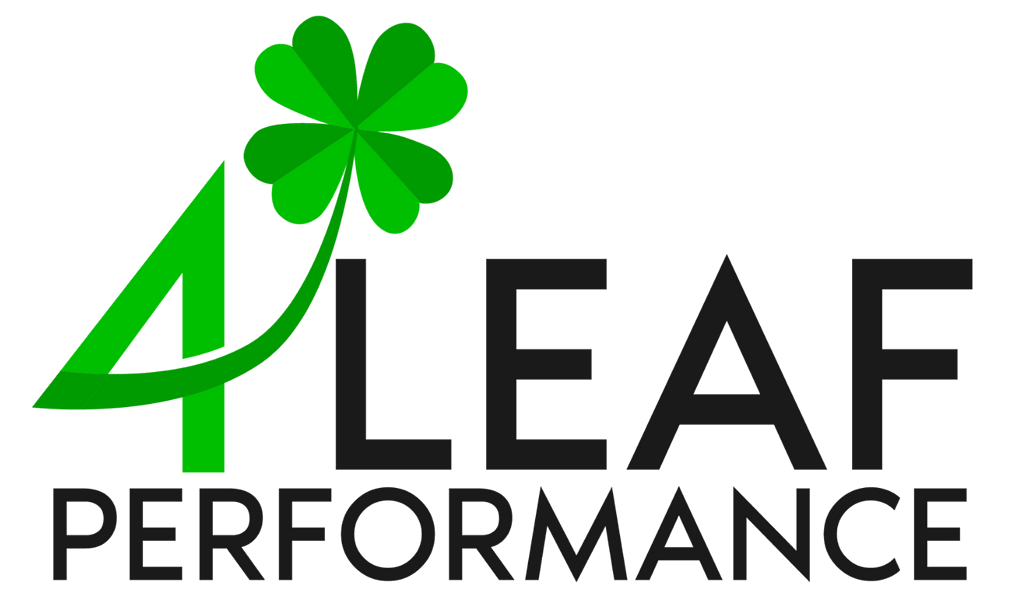In today’s data-driven world, understanding the difference and the synergy between quantitative and qualitative data analysis is crucial for any business aiming to refine its strategy. Quantitative data, consisting of numbers and figures, offers measurable and statistical insights critical for any data collection effort. On the other hand, qualitative data brings context and depth, presenting the subtleties behind the numbers through detailed observations and interviews.
Why is this integration so important? Simply put, relying solely on one data type can give a skewed perspective of reality. By combining quantitative and qualitative data analysis, businesses can achieve a more balanced view, enhancing their strategic planning process and improving decision-making. This approach not only enriches the strategic management efforts but also aligns closely with the overarching goals of any corporate strategy.
Understanding Quantitative and Qualitative Data
What is Quantitative Data?
Quantitative data analysis involves using numerical data to understand patterns, measure variables, and determine statistical significance. In business strategy, quantitative data can come from various sources like sales records, website traffic, or financial performance metrics. Effective data collection methods such as surveys and analytics tools are fundamental in gathering this type of data. This form of analysis helps in strategic planning, providing hard facts to guide strategic management decisions.
What is Qualitative Data?
Conversely, qualitative data analysis deals with non-numerical information that helps explain the ‘why’ and ‘how’ behind patterns observed in quantitative data. This data type typically comes from interviews, focus groups, and customer feedback, offering rich insights that quantitative data alone cannot provide. In terms of corporate strategy, qualitative analysis plays a critical role in understanding customer sentiment, market trends, and organizational culture. It’s an essential component of the strategic framework that complements quantitative analysis by adding depth and context to the numerical insights.
Benefits of Integrating Quantitative and Qualitative Data
Enhanced Decision-Making
Combining quantitative data analysis and qualitative data analysis enriches the decision-making process. Quantitative data provides the hard numbers necessary to benchmark and measure progress, which is essential for any data collection initiative. Meanwhile, qualitative data brings context to these numbers, offering insights into why specific trends may occur. This comprehensive view supports a more informed strategic planning process, ensuring decisions are not just based on data but on a deep understanding of the data’s implications.
For instance, if a retail company observes a 10% increase in online sales from quantitative data, qualitative insights such as customer reviews or feedback could explain that this increase may be due to a successful marketing campaign or an improvement in product quality.
Improved Customer Insights
Understanding your customer requires more than just looking at numbers. Quantitative data analysis can show trends in customer behavior, such as purchase patterns or site visits. However, qualitative data analysis delves deeper, uncovering the reasons behind these behaviors. This integration aids in refining business strategy, allowing for the development of targeted marketing strategies and product enhancements that resonate deeply with customers.
Consider a scenario where data collection shows a high usage rate of a mobile app among users aged 18-25. Qualitative data, like user interviews or focus group discussions, might reveal that this age group appreciates the app’s ease of use and social sharing features. These insights allow for targeted improvements and marketing strategies, refining the overall strategic planning process.
Strategic Planning and Forecasting
The integration of quantitative and qualitative data is a boon for strategic management. While quantitative data helps identify trends and forecast future scenarios, qualitative data provides the context needed to understand these trends. This synergy facilitates a robust strategic planning process, where forecasts are not only about numbers but also about understanding market dynamics, competitor actions, and potential disruptors.
A company might use quantitative data to identify a declining trend in product sales. Subsequently, qualitative data from customer surveys can shed light on the causes, such as market saturation or changing consumer preferences.
Innovation and Development
Innovation often stems from a deep understanding of the numbers and the stories behind them. Quantitative data analysis identifies gaps and opportunities in the market. In contrast, qualitative data analysis provides insights into customer needs and desires. Together, they form a solid foundation for product development, service enhancements, and corporate strategy evolution, ensuring that innovations are relevant and timely.
Imagine a software company that tracks feature usage (quantitative data) and collects user feedback (qualitative data). Suppose the data shows low engagement with a new feature. Still, user comments suggest that they find it potentially helpful but too complex. In that case, the company can innovate by simplifying the feature instead of discarding it.

Challenges in Integrating Quantitative and Qualitative Data
Data Collection and Quality Issues
Merging quantitative and qualitative data analysis presents distinct challenges, primarily during the data collection phase.
Quantitative data is typically straightforward to gather through structured methods like electronic tracking and standardized surveys, which are scalable and easily quantifiable. However, qualitative data relies on more subjective techniques such as detailed interviews, focus groups, and observational studies.
The main challenge here is ensuring consistency and reliability. For instance, different interviewers might pose questions in slightly different ways, leading to data that is not easily comparable. Aligning these diverse methods is crucial for maintaining data quality and integrity, which are foundational to an effective business strategy.
Data Analysis and Interpretation Challenges
Integrating quantitative and qualitative data also poses significant analysis and interpretation challenges.
Quantitative data lends itself well to statistical analysis, providing clear, objective results essential for strategic planning. In contrast, qualitative data requires content analysis, thematic analysis, or other interpretive strategies to extract meaningful insights. This process can be highly subjective and influenced by the analysts’ perspectives and is often more time-consuming than quantitative analysis.
The key challenge is to synthesize these insights to complement the quantitative findings, enhancing the overall strategic management efforts without overshadowing the hard data.
Integration and Application Challenges
Once data is collected and analyzed, the next challenge is effectively integrating these insights into the corporate strategy.
Due to its objective nature, quantitative data often drives many predictive modeling and resource allocation decisions. In contrast, qualitative data captures the nuances of customer experiences and motivations and can sometimes be undervalued or overlooked.
Finding the right balance and ensuring that qualitative insights are given due consideration can be difficult but is essential for developing a comprehensive business strategy. Moreover, translating these integrated insights into actionable strategies requires a sophisticated understanding of both data types and a flexible approach to strategic planning.
Cultural and Organizational Barriers
Finally, cultural and organizational barriers can hinder the effective integration of qualitative and quantitative data.
Traditionally data-driven organizations may prioritize quantitative over qualitative data, potentially missing out on crucial insights that could inform better decision-making. Conversely, in companies where decision-making is heavily qualitative, there may be resistance to integrating more structured quantitative methods.
Encouraging a culture that equally values both types of data is essential for the long-term success of any strategic management practice, especially for modern teams.

Best Practices for Leveraging Both Types of Data
Tools and Technologies
Successfully integrating quantitative data analysis and qualitative data analysis requires the right tools.
For quantitative data, software solutions like advanced analytics platforms and data visualization tools can streamline data collection and analysis, turning vast amounts of raw data into actionable insights.
For qualitative data, tools that facilitate content analysis and thematic coding are essential. Technologies like text analysis software and AI-driven sentiment analysis can help extract meaningful patterns.
Investing in integrated platforms that handle both data types can significantly enhance your business strategy by providing a holistic view of the information.
Developing a Data-Driven Culture
Creating a data-driven culture within an organization is critical for successfully integrating quantitative and qualitative data. This involves training teams to appreciate and utilize both data types in their decision-making processes.
Regular training sessions and workshops can equip employees with the skills necessary to perform both qualitative and quantitative data analysis, fostering a balanced approach to strategic planning. Moreover, leadership should advocate for the equal importance of both data types, ensuring that all levels of the organization understand their value in strategic management and corporate strategy.
Establishing Clear Processes and Protocols
Establishing clear processes and protocols for data management is vital to ensuring the effective use of both quantitative and qualitative data. This includes guidelines for how data is to be collected, stored, analyzed, and reported. Developing a standardized approach secures data integrity and simplifies the integration process, allowing for smoother strategic planning. Clear documentation and regular audits of these processes can help maintain high standards and encourage continuous improvement.
Collaboration and Communication
Finally, fostering collaboration and communication across departments can enhance qualitative and quantitative data integration. For example, encouraging open dialogues between the analytics team and the customer relations staff can bridge the gap between numerical data and real-world insights.
Regular cross-departmental meetings to discuss findings, share insights, and brainstorm on data collection strategies can lead to a more cohesive business strategy that leverages the full spectrum of available data.

Mastering Data Collection for Enhanced Corporate Strategy
As you consider the dynamics of integrating quantitative and qualitative data into your business operations, remember that the journey toward a truly data-driven organization is continuous and evolving. The complexities might seem daunting at first, but the rewards are undeniable. If you’re ready to transform your data collection and analysis processes but are unsure where to start, we at 4 Leaf Performance are here to help.
At 4 Leaf Performance, we specialize in guiding business owners and executives through the intricacies of strategic data utilization to maximize business outcomes. Whether you need help with data integration, developing a data-driven culture, or refining your strategic initiatives, our team of experts is equipped to assist you every step of the way.
Take the first step towards leveraging data to your competitive advantage. Contact us today, and let’s elevate your business strategy to new heights!



